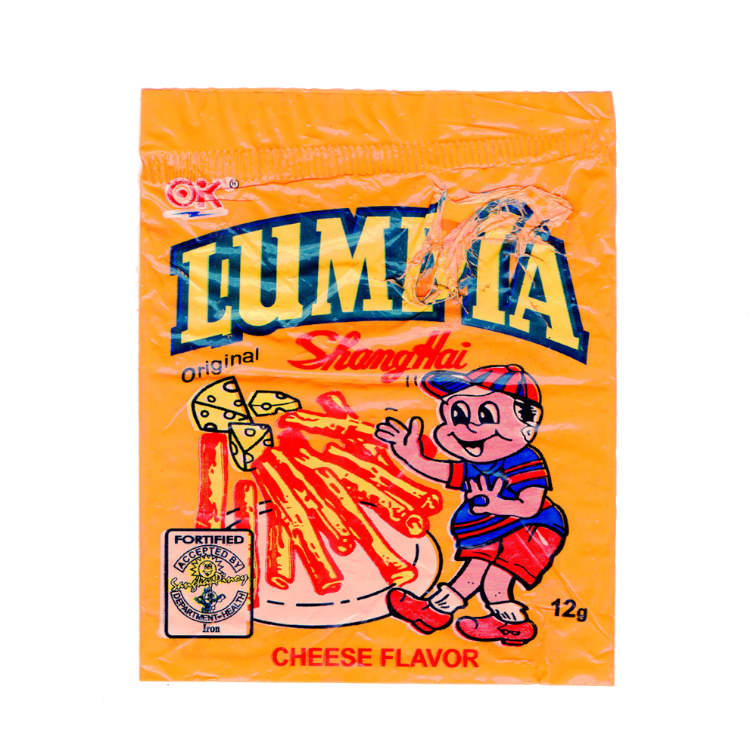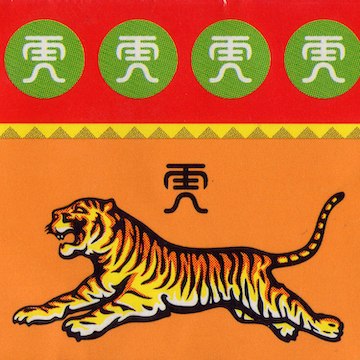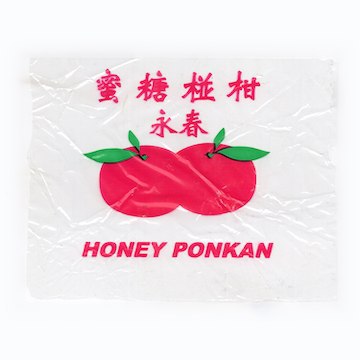Sachet Archives is a mini-archiving project defining Filipino ephemera to those unfamiliar with it. From the mind of queer, Visayan visual artist Ginoe, it serves as a public archive of local mementos from supermarkets and merchants across the Philippines. They are images that only existed for a short period, expected to have a limited shelf-life and popularity.
But through Sachet Archives, these designs are no longer impermanent as the virtual archive treats them as important pieces of art. Although most of these cost P10 at a sari-sari store near you, they are a slice of Filipino visual identity, from their use of primary colors to their economical design principles.
“Local ephemera is as ‘pop [art]’ as any other Uniqlo collaboration.”
“I guess as a former design student myself, I find that what we study in school consists of mostly Western design education. We have this idea of design as something colossal, sleek, efficient and innovative,” says Ginoe. “Design can be all that. I’m just presenting other ways of designing and thinking about things. That’s why I offer a bit of my own commentary in the archive—what works for me, what I find funny or useful.”

Browsing through the archives elicits different reactions. For creatives, scrolling through the account’s feed may gives design ideas that are close to home. For non-creatives, it can bring some sentimentality about childhood. It transports us to a time when we consumed Cali Nuts, Lumpia Shanghai, White Rabbit and other cheap chichiryas we purchase when anime sa hapon is on. It’s where creativity meets Filipino nostalgia.
Read more: This radical zine features works by Dead Balagtas, Ginoe, Lakan Umali, and more
Filipinos have a bad reputation when it comes to preserving culture. That’s why the existence of Sachet Archives is heartwarming. It is a love letter to everyday Filipino life. It’s our culture defined through ordinary items we consume. It highlights the aspects of our lives we tend to ignore but should pay attention to more. So we talked to Ginoe on the origin of this project, what he hopes to achieve with it and the uniqueness of Philippine advertising ephemera.
What fascinates you about the Philippine advertising ephemera?
I was one sentimental kid. I remember being sad whenever I had to throw away candy wrappers. I would keep them in my pocket until it filled up with wrappers. My fascination escalated when we finally opened a small sari-sari store. I remember I would always bug my mom to open one just to take my bahay-bahayan to the next level. I wouldn’t be selling crushed gumamela and santan branches to my imaginary friends anymore, it would be a real store with real goods and real money.
I didn’t own any gaming consoles or a lot of interesting toys to keep me busy, so I would just spend entire afternoons in our sari-sari store looking at the packaging and reading the labels. The only Pokemon I knew of was the bootlegged version I would occasionally see on the wrappers of the chichirya we would sell (or on the school supplies of my classmates.)
Why do these everyday images or logos stand out for you?
I guess it’s their simplicity but also their highly graphic nature. They can also be fun and cheeky at times. The humor behind them can be kind of left-field as well. Not that condescending “haha-its-Comic-Sans-so-its-funny” kind of thing.

What inspired you to make a virtual platform for Filipino ephemera?
I honestly am learning a lot while I compile these things. A lot of these design strategies have been forgotten because of the innovation in printing technology and graphic processing. I just like how these often unnamed designers went around the limitations of their output and found ways to maximize what was available. Super limited color palette, not being able to use clean sweeping gradients and the margin of error in their printing processes.
Although, I’m really glad to see there’s a resurgence of these printing processes such as riso, xerography, silkscreen and stenciling methods.
“I just like how these often unnamed designers went around the limitations of their output and found ways to maximize what was available.”
Filipino ephemera tends to disregard copyright laws. Does it make it more unique or is it something we should be wary about?
Honestly, this is the part of Philippine ephemera that I like most. It has this anarchist quality to it. The designers aren’t just copy-pasting these characters though. They change the color, modify the shape of the face or replace brand names with synonyms and related terms; often ending up with more memorable results.
I’ve seen Dora the Explorer brand plastic but they changed the characters’ colors into crazy combinations. A friend of mine told me he saw a bootlegged Hello Kitty product, but they rebranded it into “Hello Cat.” It’s amazing and fun how these established brands get eaten up and regurgitated into new ones.
Read more: “Queer art is not just a trend or a fad,” says this visual artist
There’s this danger in saying “disregarding” copyright laws, though. But I am always reminded how Disney literally owns almost every intellectual property now. These chichirya brands don’t even earn 0.001 percent of Disney’s revenue, so Hello Cat is the last thing we should be worrying about.
What do you hope to achieve with this archiving project?
I would like more people to document ephemera that they like. Sachet Archives, as much as I’d like to think that it has become a community, is dictated by my own sensibilities and artistic choices. Before I started this archive, I didn’t know a lot of people had the interest. But I’m glad to know that people are curious and enthusiastic.

Another thing I would like to happen is for design and art educators to encourage their students to study our own ephemera. Some of these things are geo-specific. I am archiving objects found near my locale, Negros Occidental. There may be interesting ephemera in Bicol, Palawan, GenSan, etc. and I may not be able to document and archive them all. Hopefully, people who follow the account make their own archives, too.
I also want to challenge the notion of “Pop Art.” It’s not just Warhol, not just Coca Cola or Kaws. Local ephemera is as ‘pop’ as any other Uniqlo collaboration. I hope to see more people integrating ephemera into contemporary art and self-publishing. I’ve been using ephemera as the backbone of my color theory/composition for my art and design work, I hope people get to see them as useful references, too.
Photos courtesy of Ginoe
This story is part of our #SeenOnScout series, which puts the spotlight on young creatives and their body of work. Ginoe and many other creatives shared their work at our own community hub at Scout Family and Friends. Join the Scout Family & Friends Facebook group right here, and share your work with us in the group or through using #SeenOnScout on Twitter and Instagram.
























Comments